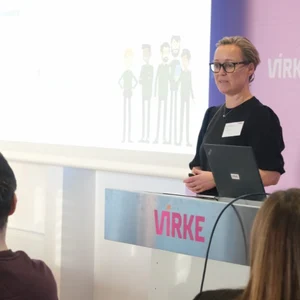Game on. Harassment off.
Game on. Harassment off.

The scene opens with an angry raised voice directed at you from a customer standing across the counter. Then comes an insult. Next, a threat. None of it is real - this time. St1 has launched a virtual training programme based on real incidents from its energy station network, giving employees a safe place to practise what to say and do if they face real-life confrontations.
Unfortunately, those confrontations occur far too often in real life for employees working in customer-facing positions. A survey conducted in 2024 among the employees across our retail network of St1 stations in Norway revealed the following results:
49.5% of employees reported experiencing harassment at their current workplace.
27.9% had received unwanted sexual comments.
35.1% had been subjected to threatening behaviour.
The most common source of harassment was customers, with young employees and women being the most affected groups.
Introduction video for new harassment training program
A safe place to practise
Although our goal is to prevent harassment entirely, a new online training programme provides guidance on how to handle situations if they do arise. “We want people working in our retail network to have the tools and the backing to handle difficult customers professionally—and to know they’re never alone,” says Sofie Fredriksen, who leads St1’s support centre and works on HSSE reporting.
Fredriksen served as content lead for the training, combing incident examples and the HSSE handbook to make sure the scenarios feel authentic rather than theoretical. Developed in cooperation with the software supplier Attensi, the training guides staff through three scenarios—an angry customer, harassment, and a threat of violence. It focuses on conflict management, body language, clear communication, and what happens after the incident.
The message is clear: zero tolerance. If something feels wrong, it gets reported as an HSSE deviation and raised with the immediate manager so that help and support - not silence - becomes the default.

Nina Thomassen at Virke conference
What managers do next
The final part of the training programme is about the manager’s role. Two dedicated chapters are written for leaders, including one scenario built around a colleague who has just been subjected to abuse. The module coaches managers through what support looks like in practise and how to make reporting routine rather than an exception. “Zero tolerance isn’t a slogan—it’s a routine,” says head of retail operations & EV charging Nina Thomassen. She led the 2024 survey and initiated the St1 participations in the “kindness week”, which we will come back to.
“If it feels wrong, report it. That’s how you protect people shift after shift”, she emphasises.
The leader training also leans into culture: creating a workplace where incidents are shared, followed up, and learned from, and where employees know that their immediate manager is their first point of contact for reporting.
Early uptake, simple incentives
The training programme just went live, and around 800 employees have already completed it. To keep momentum across busy shifts, a weekly prize is handed out – not based on game score, but participation. Because the goal is learning and completion, not points. “This isn’t about a leaderboard,” says Malin Ellingsen, St1’s training lead. “It’s about practise, safety and the culture we build – every day.”
Built on our own data, backed by clear signals
Rather than rely on other companies’ figures, St1 ran its own employee survey with support from NTNU Social Research, providing a baseline tailored to the network. The findings feed directly into the training and into simple, visible measures like Kindness Week, which returns in January.
The campaign “Kindness Week”, originally started by Circle K several years ago to raise awareness about harassment of retail employees, and has since been adopted by others in the industry through the Enterprise Federation of Norway Virke. St1 participated first time in January this year and will run a campaign directed at customers again in 2026. “In our first run, we did posters and engaged with media, and for next year, stations are also considering using their own Facebook pages to reach customers directly with clear, practical messages”, Nina Thomassen explains.
Designed for Nordic adoption
Although the course grew out of specific station experiences, it’s designed for easy translation and local adoption across the Nordics, aligning with shared HSSE principles and a matrix-based way of working. Teams in different countries are reviewing the materials and evaluate how they wish to implement this into the various markets.
Practise for real life
The scenes in the simulation are uncomfortable to watch – and that’s the point. Practising the words and the mindset in a headset makes it easier to act under pressure in real life. And when the headset comes off, the expectation remains the same as on screen: report everything, support each other, and make sure nobody has to face these difficult situations alone.